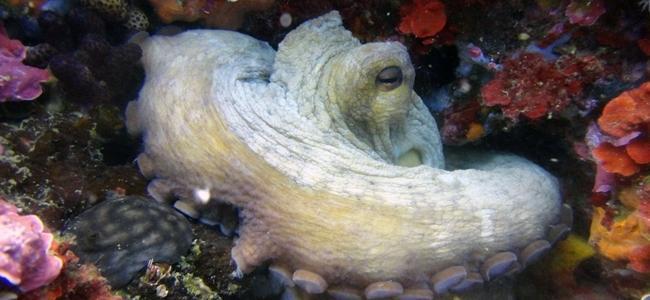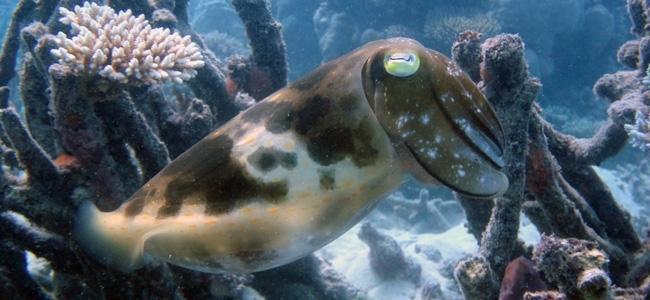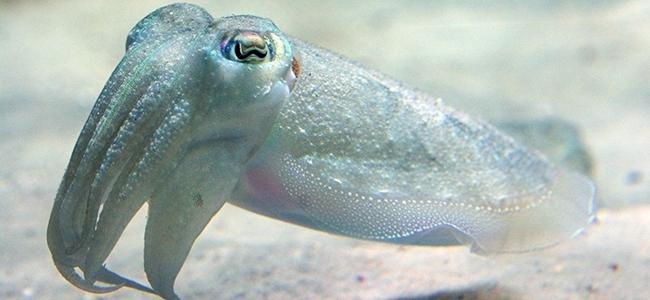The class of cephalopods (Cephalopoda) owes its name to two Greek words: kephale meaning head and podos meaning feet. This is because it denote the presence of feet (or rather tentacles) on the head. In this class we find species such as squid, octopus, nautilus and cuttlefish. This is an exclusively marine class of active predators, whose body has a mantle containing a siphon, with which they expel water under pressure, thus obtaining an impulse that allows them to move. The mantle of cephalopods can have pigment cells called chromatophores. The condensation or expansion of these cells due to intentional muscular movements, gives cephalopods a peculiar characteristic. They are species that can change their color and even the roughness of their body in a matter of seconds, managing to mimic the environment in a way unparalleled in other animal groups. It has been described that some of the species can also use the changes in body color as a communication mechanism between the specimens.
Cephalopods have a variable size depending on the species. There are species that barely reach a few centimeters. At the opposite end, we have the giant squid that can reach 19 meters in length and weigh almost a ton. Without a doubt, these giant squids are the largest invertebrates on record.
The body of the cephalopods, as we have previously mentioned, is characterized by the presence of tentacles in the cephalic region. The number of tentacles is variable, from 8 in the case of the octopus, to 80 in the case of the nautilus. Another characteristic of cephalopods, which is also located in the cephalic region, is their mouth. This is composed of a pair of robust and powerful jaws, called parrot beaks (in allusion to the very similar shape of the beak of these birds), with which the animal tears its prey to feed.
There is a great variety in terms of cephalopods' shells. There are species that are completely lacking in shells, as is the case with octopuses. Other species, such as squid and cuttlefish, have more or less developed internal shells. The cuttlefish shell is small and curved, being internally embedded in the mantle. In the squid the shell has been considerably reduced and we will only find a protein structure called feather that is also embedded in the mantle of the animal. Finally, there are species whose shells are external, as is the case of the nautilus. It should be noted that the latter have an external shell formed by a series of chambers of increasing size, which are closed and full of air. This allows them to maintain a neutral buoyancy. The outermost chamber, and therefore the largest, is not closed, and it is where the animal occupies itself with its entire body, leaving only its tentacles and eyes free on the outside.


